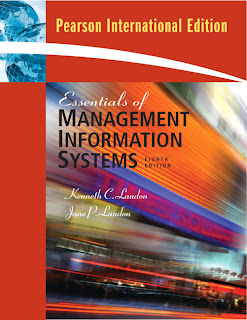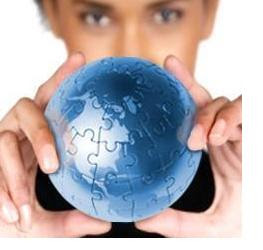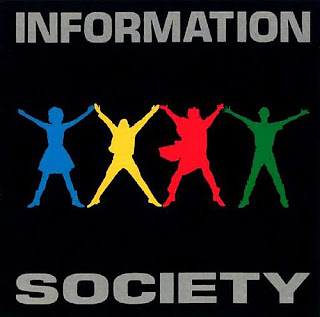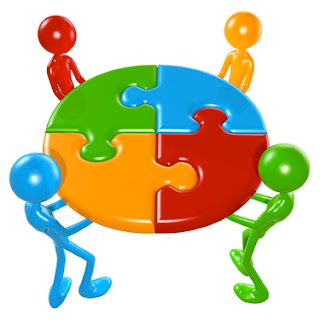
Plan Knowledge Area

Module A, Plan, looks at organisations and their use of IT, both as an enabler for effective Information Systems and as a platform for innovation. The module requires the candidate to have thorough understanding of organisations, their strategies and their business processes, as well as the global trends and opportunities which are involved. The candidate shall recognise the main issues related to the management of IT, such as selecting the appropriate technology, or choosing between in-house systems development or outsourcing. The candidate shall also be able to justify IT investments and know about some of the legal and ethical aspects of IT. He / She shall be aware of the requirement for a professional approach to project management and quality assurance. The candidate shall also appreciate the importance of team building and effective communication when presenting the case for change within the organisation.
Tuesday, January 13, 2009
Wednesday, October 15, 2008
A.2.3 Typical IT Functions and Technology Types
 A.2.3.1
A.2.3.1 systems, planning systems, automation systems, and all types of MIS
A.2.3.3
- From a technical perspective, a Transaction Processing System (or Transaction Processing Monitor) monitors transaction programs, a special kind of programs. The essence of a transaction program is that it manages data that must be left in a consistent state.
- A control system is a device or set of devices to manage, command, direct or regulate the behavior of other devices or systems.
- 'MIS' (Management information system) is a planned system of collecting, processing, storing and disseminating data in the form of information needed to carry out the functions of management.
- A Computer Database is a structured collection of records or data that is stored in a computer system. The structure is achieved by organizing the data according to a database model.
- Data mining is the process of sorting through large amounts of data and picking out relevant information.
- A data warehouse is a repository of an organization's electronically stored data. Data warehouses are designed to facilitate reporting and analysis.
This classic definition of the data warehouse focuses on data storage. However, the means to retrieve and analyze data, to extract, transform and load data, and to manage the data dictionary are also considered essential components of a data warehousing system.
Sunday, October 5, 2008
A.2.2 The IT Needs of Different Organisational Structures
A.2.1 IT Strategy
 A.2.1.1
A.2.1.1A.2.1.2
A.2.1.3
Information Technology Strategy, IT Strategy, IT Governance or ICT (Information & Communications Technology) Strategy, is a subset discipline of Corporate Strategy focused on information technology (IT) systems and their performance and risk management. The system by which the current and future use of ICT is directed and controlled. It involves evaluating and directing the plans for the use of ICT to support the organisation and monitoring this use to achieve plans. It includes the strategy and policies for using ICT within an organisation.- A business process or business method is a collection of interrelated tasks, which accomplish a particular goal.
There are three types of business processes:
1. Management processes, the processes that govern the operation of a system. Typical management processes include "Corporate Governance" and "Strategic Management".
2. Operational processes, processes that constitute the core business and create the primary value stream. Typical operational processes are Purchasing, Manufacturing, Marketing, and Sales.
3. Supporting processes, which support the core processes.
Tuesday, September 30, 2008
A.1.9 The Information Society
 A.1.9.1
A.1.9.1Assess the impact of IT within society and its subsets
A.1.9.2
List the advantages and disadvantages of IT in society
A.1.9.3
Describe the digital divide
Definitions:
- An information society is a society in which the creation, distribution, diffusion, use, integration and manipulation of information is a significant economic, political, and cultural activity. The knowledge economy is its economic counterpart whereby wealth is created through the economic exploitation of understanding.
- Digital divide: "Refers to the gap between individuals, households, businesses and geographic areas at different socio-economic levels with regard to both their opportunities to access information and communication technologies (ICTs) and to their use of the Internet for a wide variety of activities. The digital divide reflects various differences among and within countries. [OECD] "web.worldbank.org"
- The term digital divide refers to the gap between those people with effective access to digital and information technology and those without. It includes the imbalances in physical access to technology as well as the imbalances in resources and skills needed to effectively participate as a digital citizen. "en.wikipedia.org"
Saturday, September 27, 2008
A.1.8 Computer Based Training and e-Learning
 A.1.8.1
A.1.8.1Describe computer-based training
A.1.8.2
List the technical requirements for computer-based training, multimedia, etc.
A.1.8.3
Discuss the advantages and disadvantages of computer-based learning
Definitions:
- Electronic learning (or e-Learning or eLearning) is a type of education where the medium of instruction is computer technology. In some instances, no in-person interaction takes place.
- computer-based training or CBT is a type of education in which the student learns by executing special training programs on a computer. CBT is especially effective for training people to use computer applications because the CBT program can be integrated with the applications so that students can practice using the application as they learn.
A.1.7 Collaborative Technology
 A.1.7.1
A.1.7.1A.1.7.2
A.1.7.3
A.1.7.4
A.1.7.5
- Collaboration is a recursive process where two or more people or organizations work together toward an intersection of common goals — for example, an intellectual endeavor that is creative in nature—by sharing knowledge, learning and building consensus. Collaboration does not require leadership and can sometimes bring better results through decentralization and egalitarianism. In particular, teams that work collaboratively can obtain greater resources, recognition and reward when facing competition for finite resources.
- A workflow is a depiction of a sequence of operations, declared as work of a person, work of a simple or complex mechanism, work of a group of persons, work of an organization of staff, or machines.
- A team comprises a group of people or animals linked in a common purpose. Teams are especially appropriate for conducting tasks that are high in complexity and have many interdependent subtasks.
- A Virtual Team — also known as a Geographically Dispersed Team (GDT) — is a group of individuals who work across time, space, and organizational boundaries with links strengthened by webs of communication technology. They have complementary skills and are committed to a common purpose, have interdependent performance goals, and share an approach to work for which they hold themselves mutually accountable.
- Collaboration is a recursive process where two or more people or organizations work together toward an intersection of common goals
- Cooperation, co-operation, or coöperation is the process of working or acting together, which can be accomplished by both intentional and non-intentional agents. In its simplest form it involves things working in harmony, side by side, while in its more complicated forms, it can involve something as complex as the inner workings of a human being or even the social patterns of a nation. It is the alternative to working separately in competition. Cooperation can also be accomplished by computers, which can handle shared resources simultaneously, while sharing processor time.


